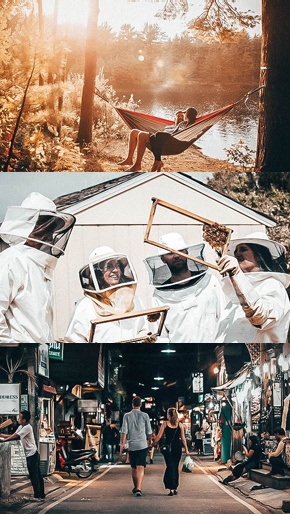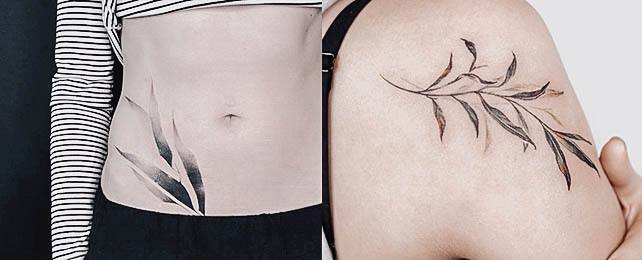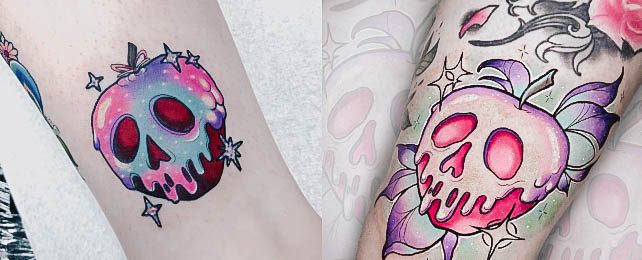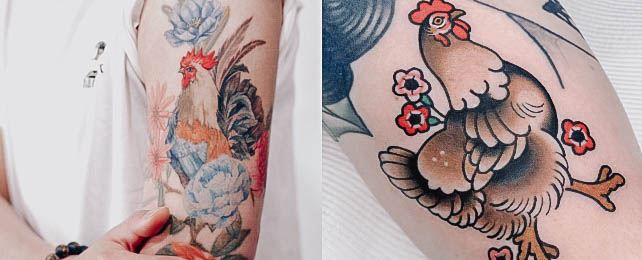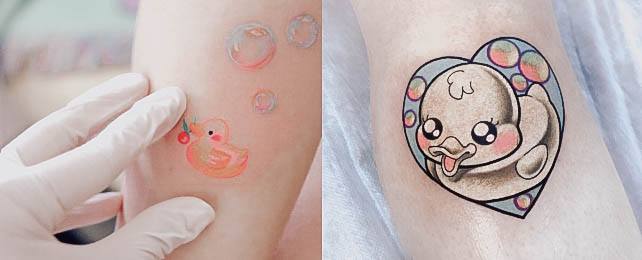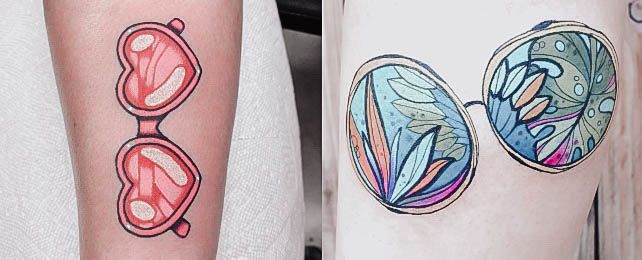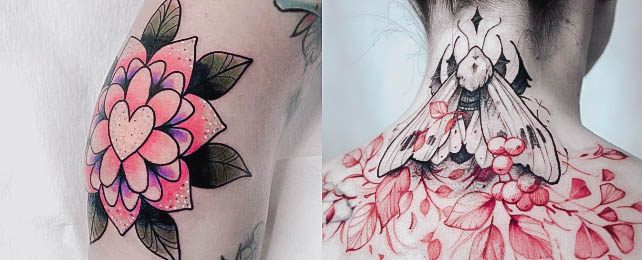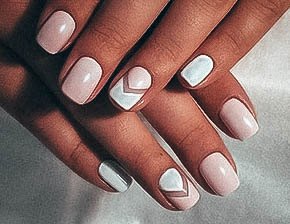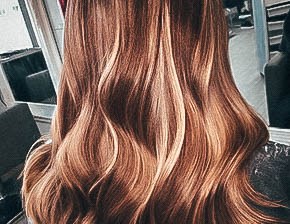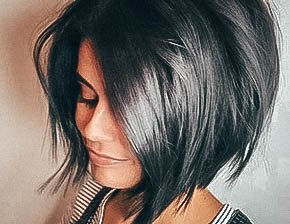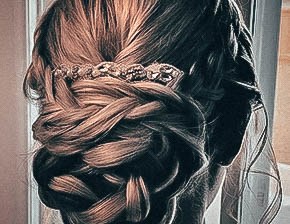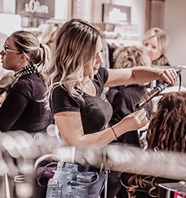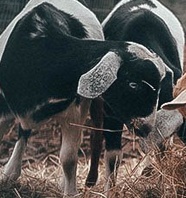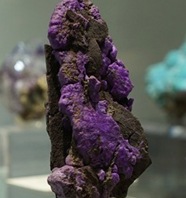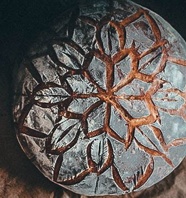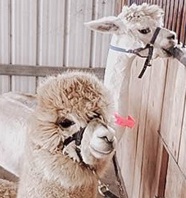It’s both curse object and blessing object.
It’s used to remove bad juju and heal as much as it is used to make others pay for hurting you. While many associate it with the practice of voodoo, it’s actually connected to dark magic and sorcery throughout European history.
There are many different styles of voodoo doll tattoos, which means the bearer of such a tattoo can select the one that most appeals to her. If she practices the dark arts and witchery, a very dark looking voodoo doll tattoo may suit her well. On the other hand, a white witch may find a very friendly voodoo doll tattoo more appropos.
The voodoo doll stands for power, good or bad. It stands for dominance over others and the ability to manipulate one’s own situation for the better. It also stands for the control of other living things and bending them to one’s will.
If you don’t feel powerful and you want to feel strong, a voodoo doll tattoo might remind you that you can be strong. Such a tattoo may also remind you that you can influence others for good or evil depending on the situation surrounding others and yourself.
A voodoo doll stuck with pins or devices of torture may even represent the existence of a tortured soul within. Don’t sport such a powerful tattoo without considering how it might be perceived.
The story behind these dolls:
The origins of voodoo dolls are shrouded in mystery, with no clear consensus on when they first appeared. Many historians believe that voodoo dolls originated in Africa, and were used in rituals to harness the power of powerful spirits. Others argue that voodoo dolls were created by enslaved Africans who brought their spiritual beliefs to the New World. It is believed that these dolls were intended to protect against evil forces, and were used for a variety of purposes, such as healing, revenge, and protection from harm or bad luck.
At its core, voodoo is a belief system rooted in ancestor worship and the belief that certain objects can be imbued with supernatural power. All voodoo dolls are made from materials that have been blessed or charged with special powers. Typically, these materials include cloth, wax, wood, bones, herbs or roots. The dolls are often fashioned into shapes that represent deities or ancestors, or figures related to magical rituals.
It is believed that voodoo dolls were used as early as the 17th century in Caribbean colonies and the American South by people of African descent. During this period, enslaved people often sought out spiritual advisors who could provide guidance and protection against oppressive slaveholders. It is believed that through the use of charms and voodoo dolls those enslaved sought strength and guidance from their African ancestors and spiritual guides.
In addition to being used for rituals of protection and healing, voodoo dolls also had a darker side during this period as a tool of revenge. This practice was heavily frowned upon by many cultures within Africa and the Caribbean at this time due to its potentially dangerous nature.
The practice of using voodoo dolls for revenge was particularly popular among African Americans living in the Southern states of America during the 1800s. In these regions, voodoo was an important part of many African American spiritual practices, often practiced in secret due to fear of reprisal from white authorities. As a form of symbolic justice towards wrongdoers (often white slaveholders or plantation owners), voodoo practitioners would fashion dolls out of whatever material was available (often cloth scraps) and then insert pins into them to represent their intended targets – thus fulfilling what they saw as rightful punishment for those who had wronged them or their loved ones.
This practice continued into the 20th century in some places (particularly Louisiana), although the use of these “magic” objects had experienced a significant decrease by this point due to increased Christian influence on traditional African American spiritual practices. Although still controversial today among many religious groups, it is important to note that voodoo dolls have largely lost their association with dark magic and are now more commonly viewed as objects imbued with positive energy meant for protection or healing rather than revenge or harm towards another person.
Today, voodoo dolls have become much more mainstream than they were centuries ago, appearing in movies and television shows such as American Horror Story and Sabrina: The Teenage Witch. These popular representations often sensationalize the practice by depicting it as dark magic or witchcraft. However, this is not necessarily accurate – contemporary practitioners rarely use the objects for anything other than positive energy – instead using them for various forms of healing work such as removing negative energy from oneself or another person etc..
Most contemporary practitioners will make use of a variety of materials when creating their doll – often following traditional methods but making adjustments where necessary due to modern times such as using plastic instead of bone etc.. They will then charge these objects with intention by consecrating them with herbs (such as lavender) or oils (such as sandalwood) before adding any charms/jewelry etc.. Once completed they will typically keep their doll nearby while they meditate – either on their own bedside table or perhaps even next to their computer while they work!
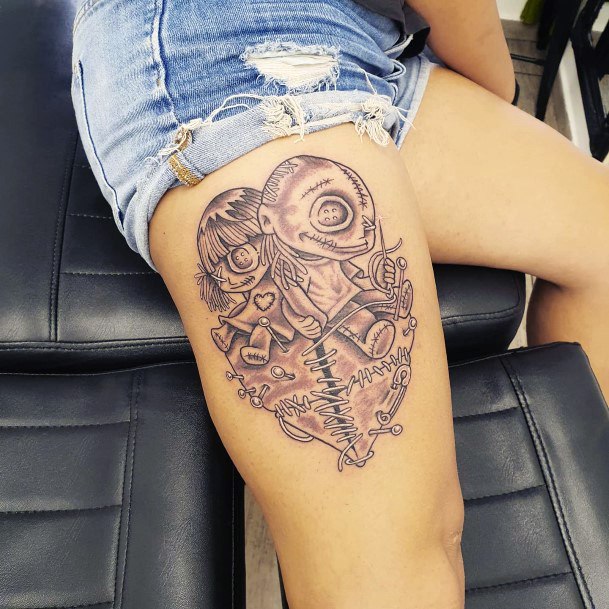
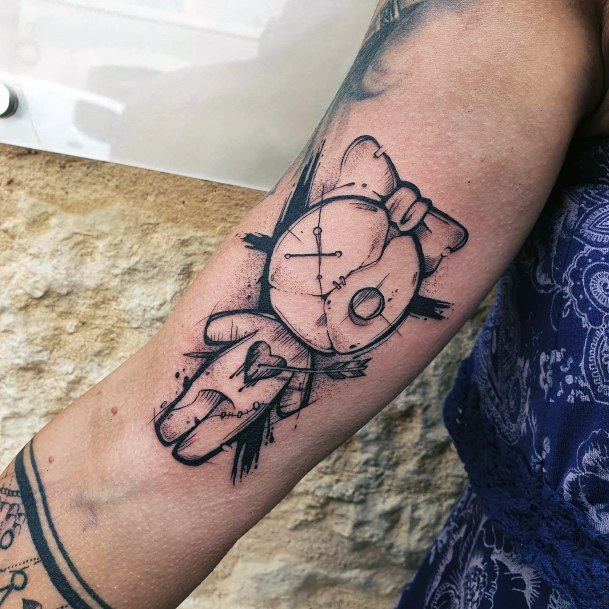

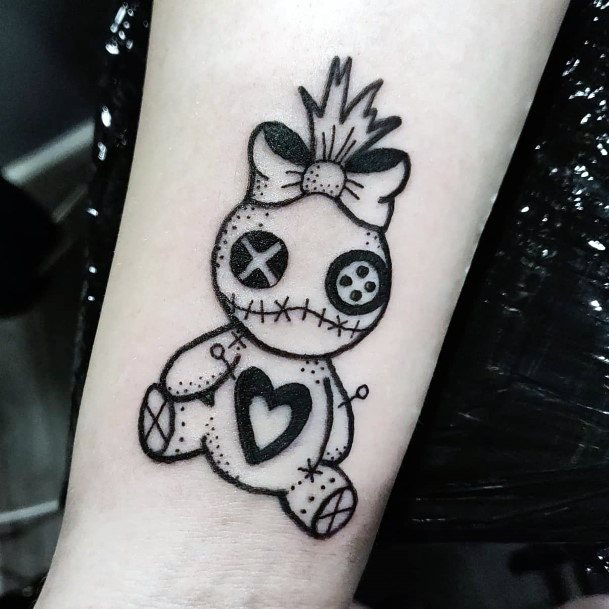
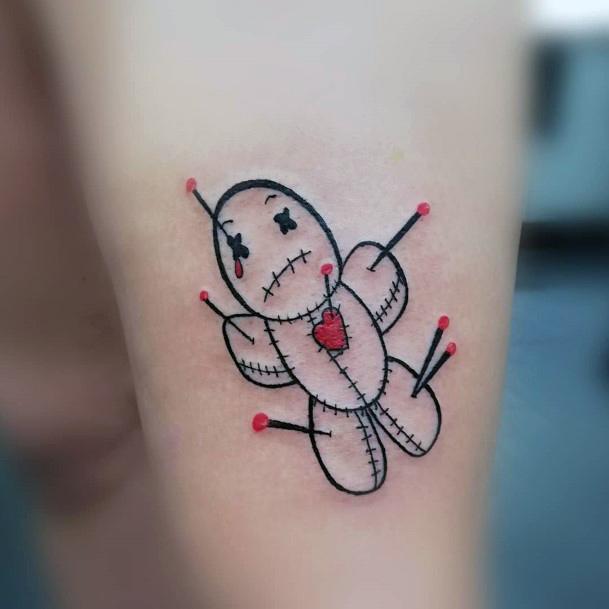
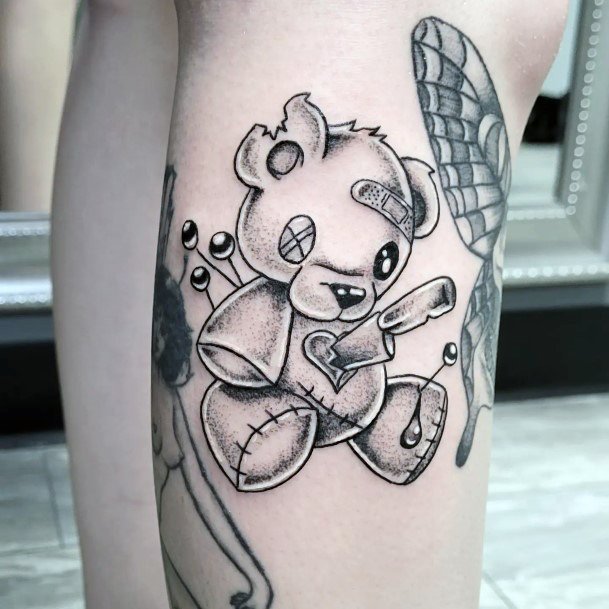

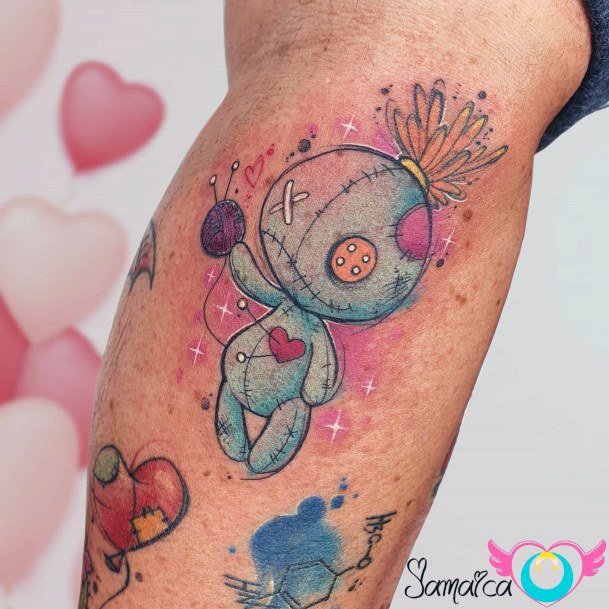
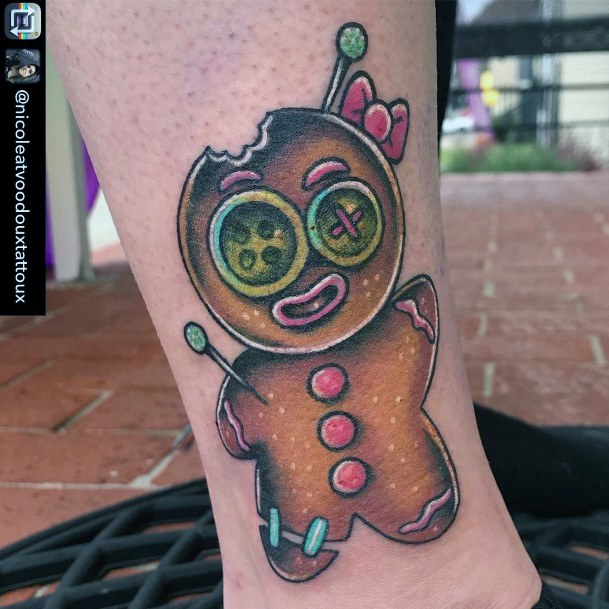

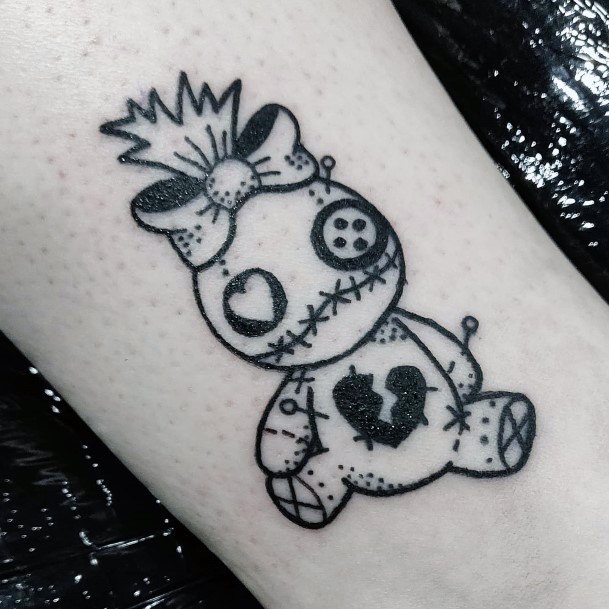
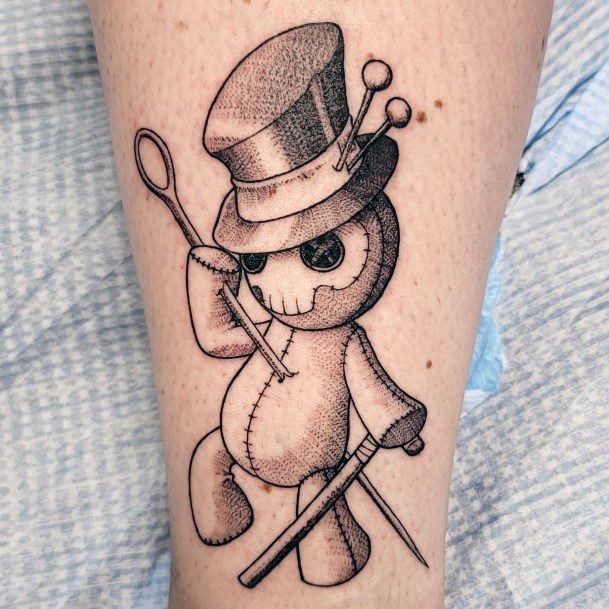
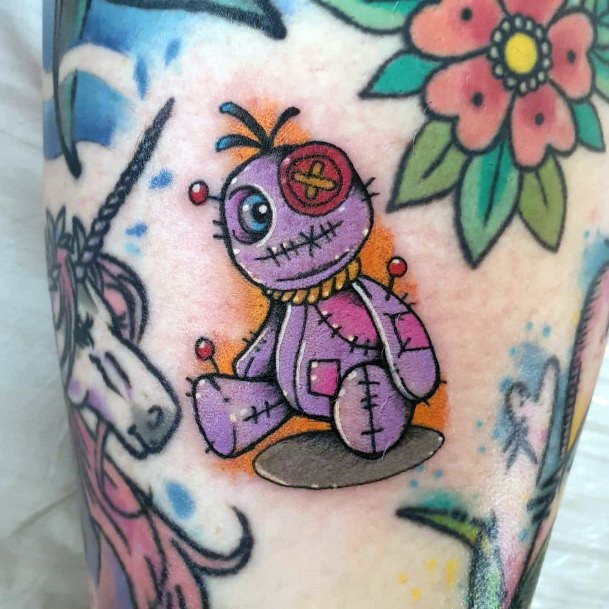
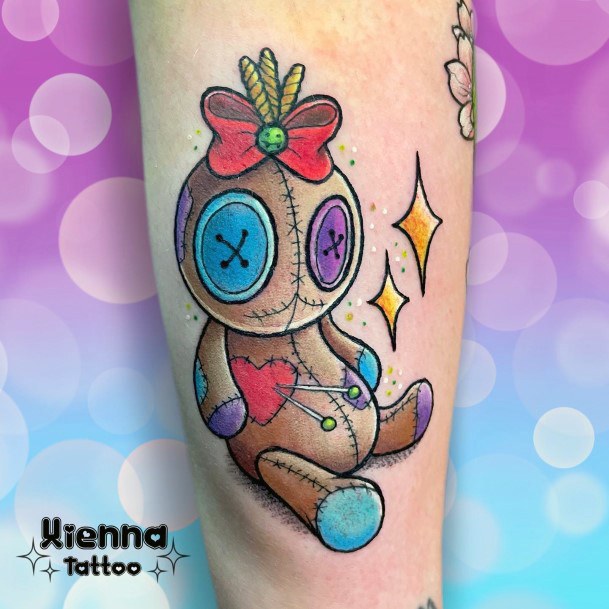
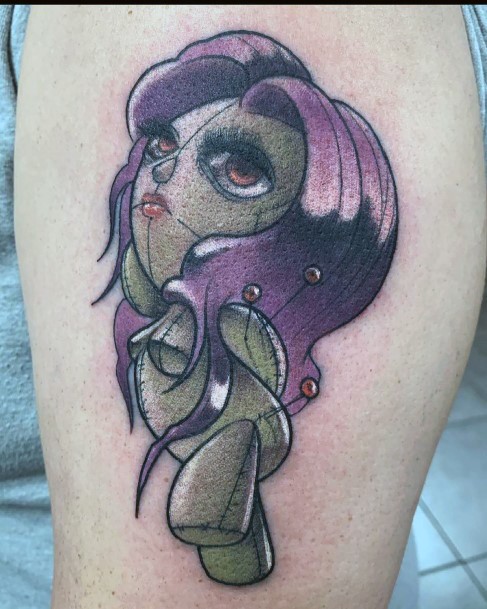

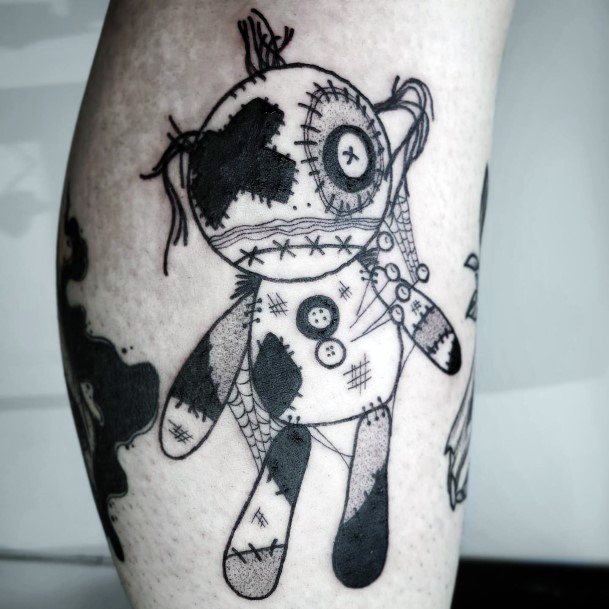
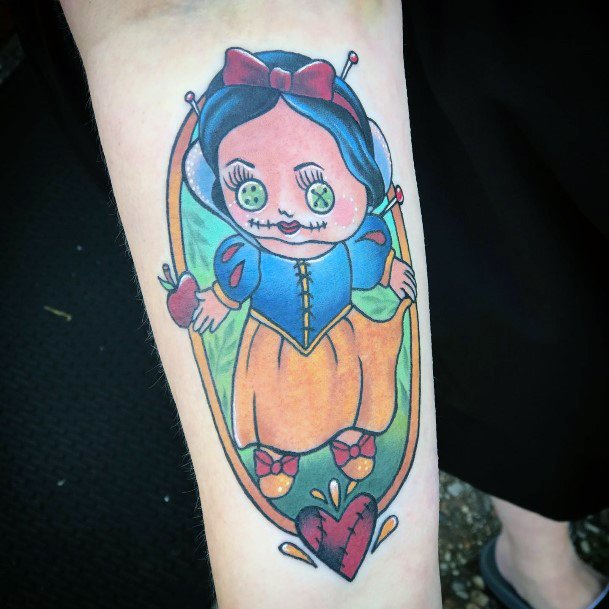
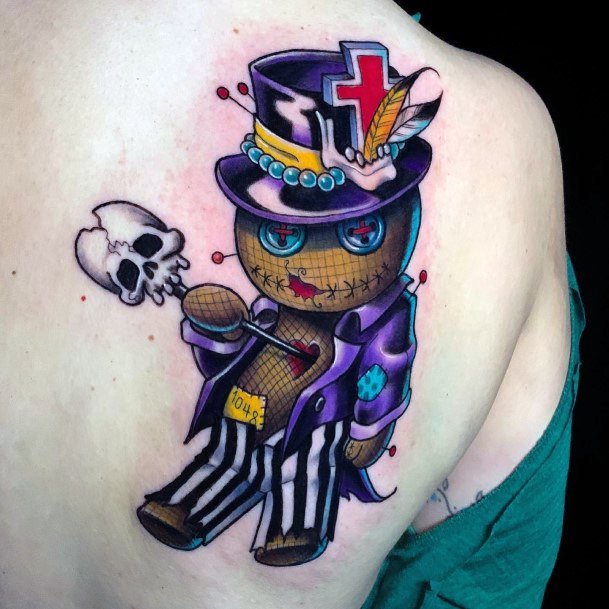
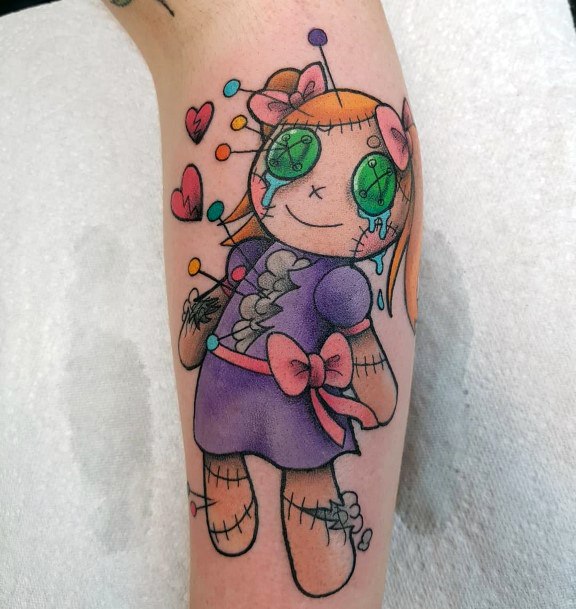

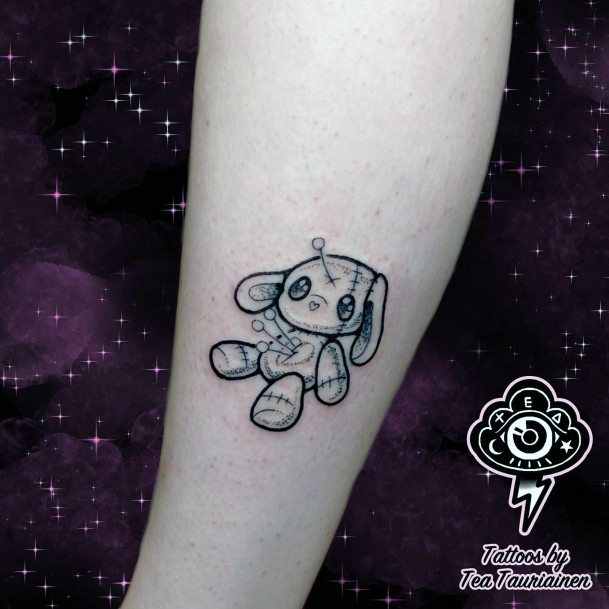
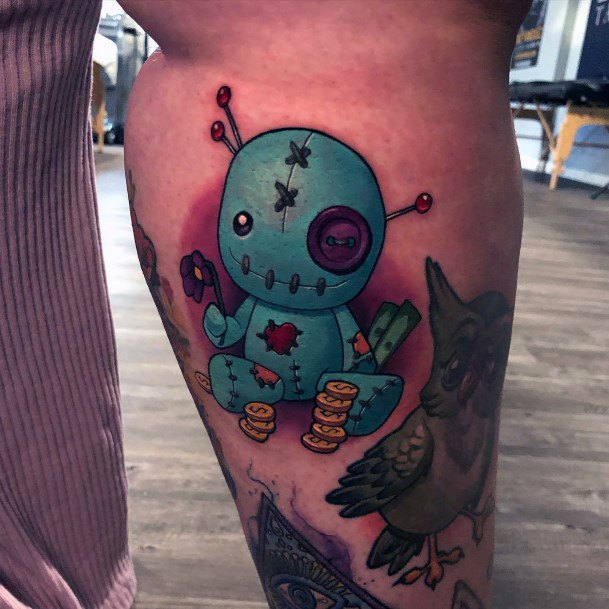
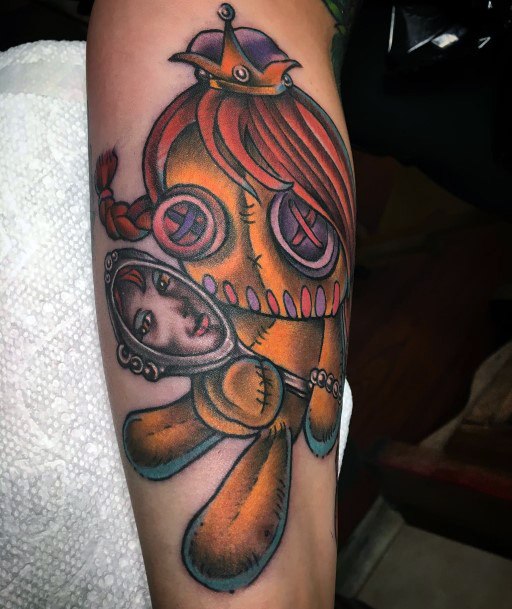
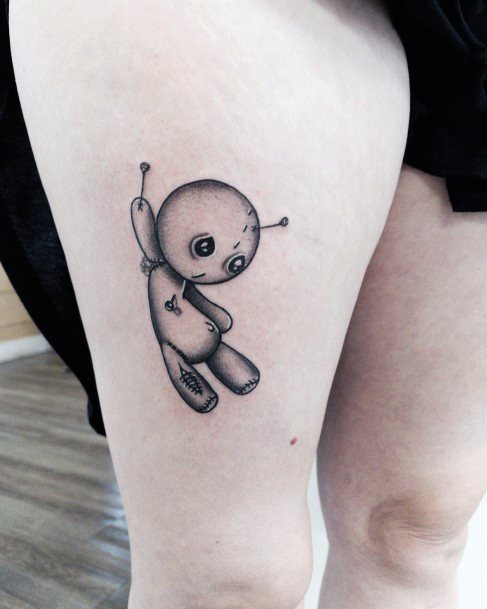
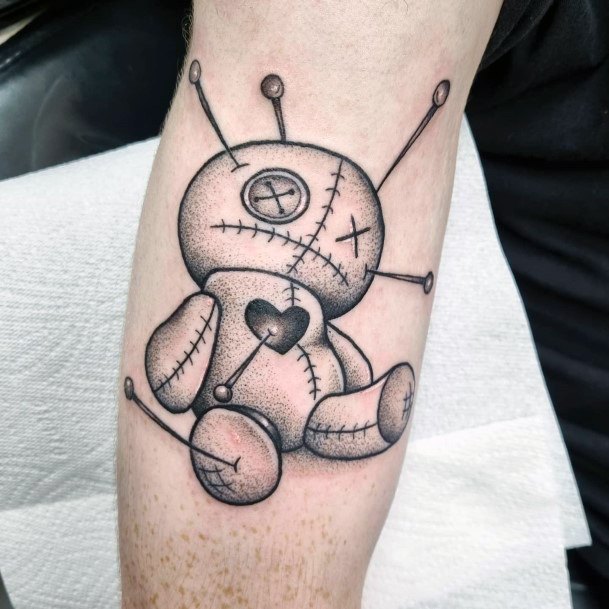
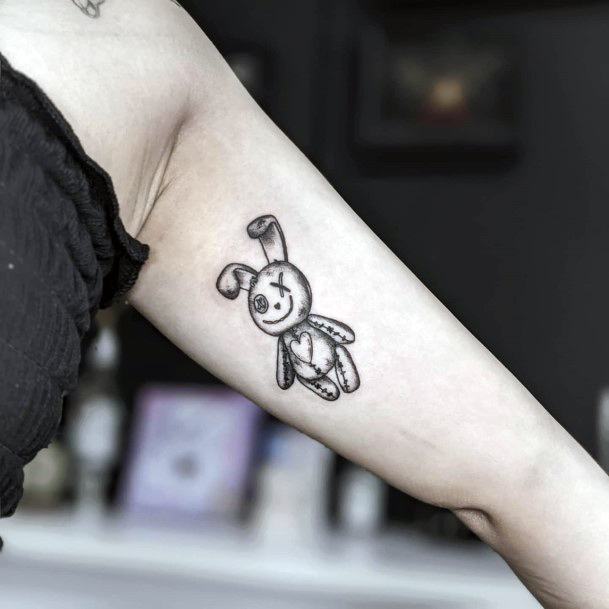
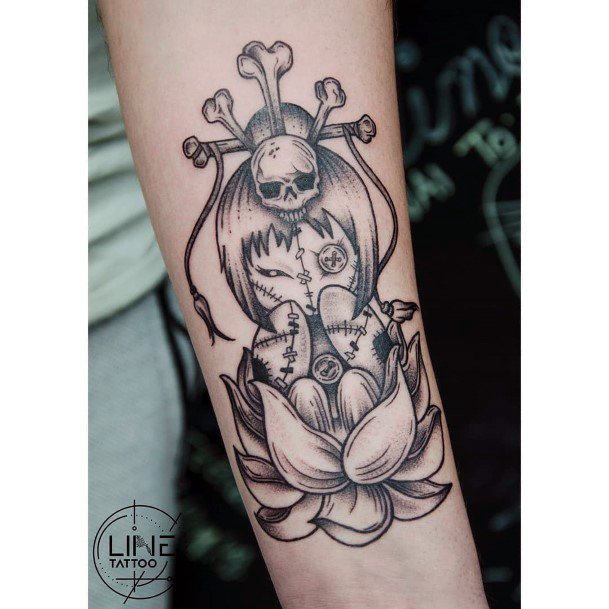
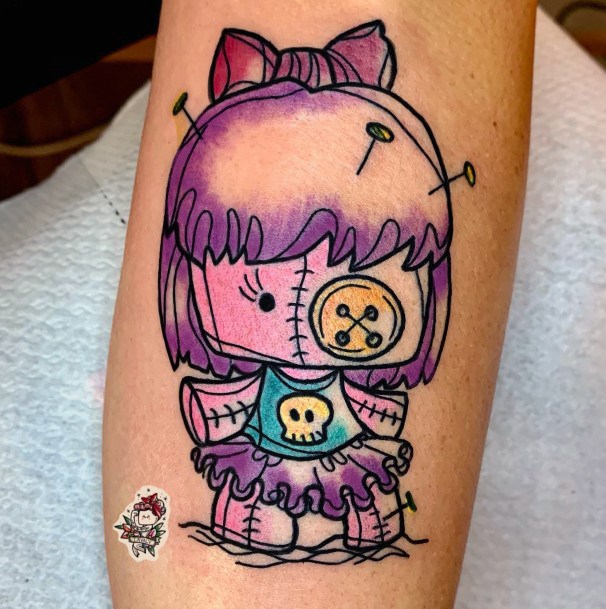

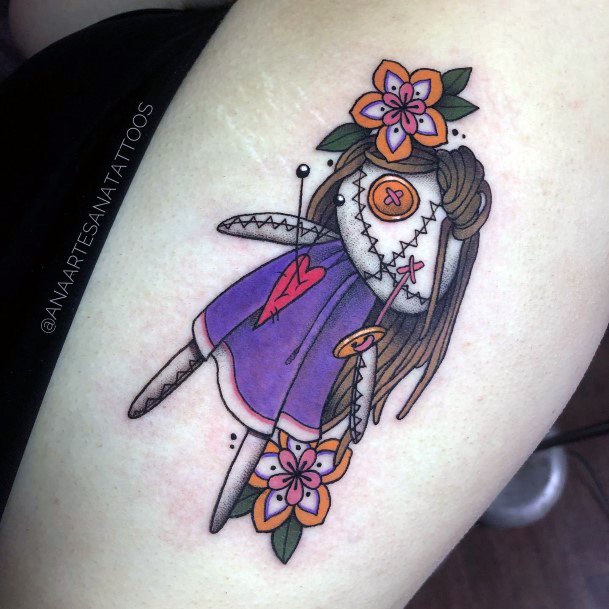

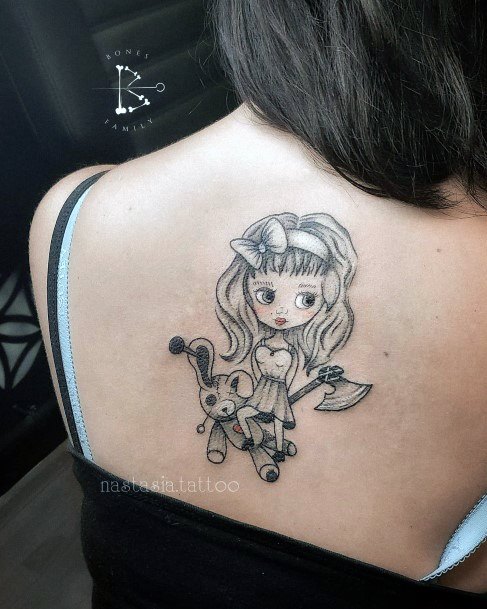
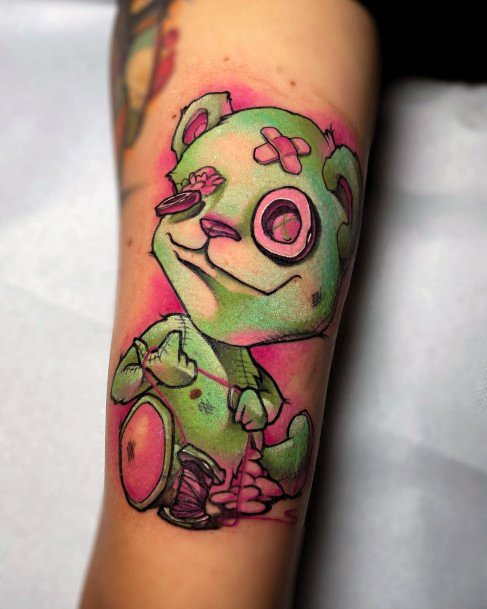
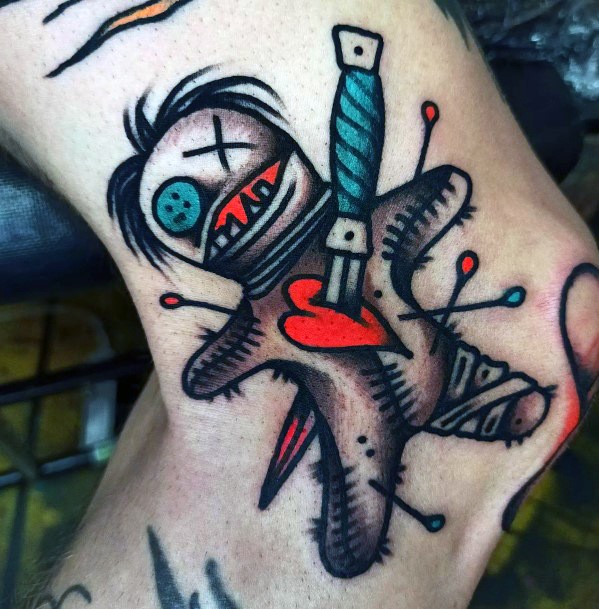
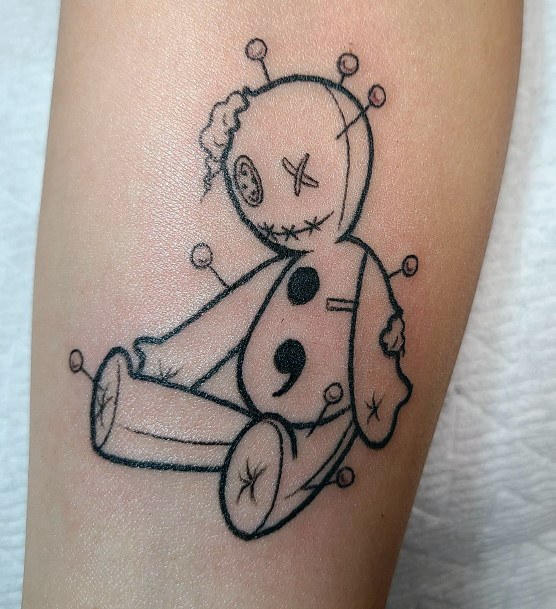
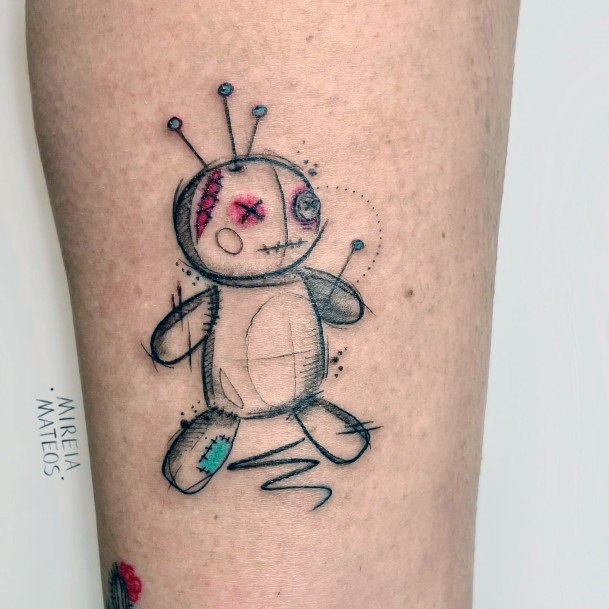

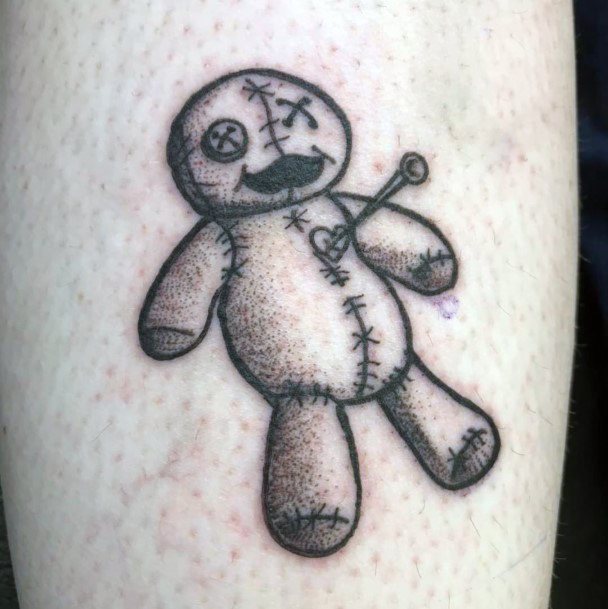
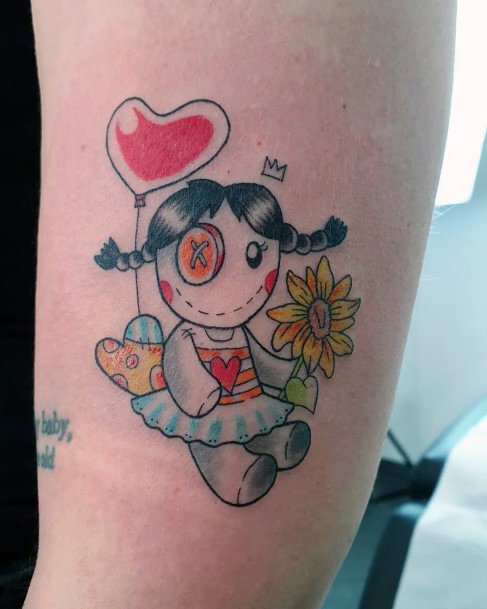
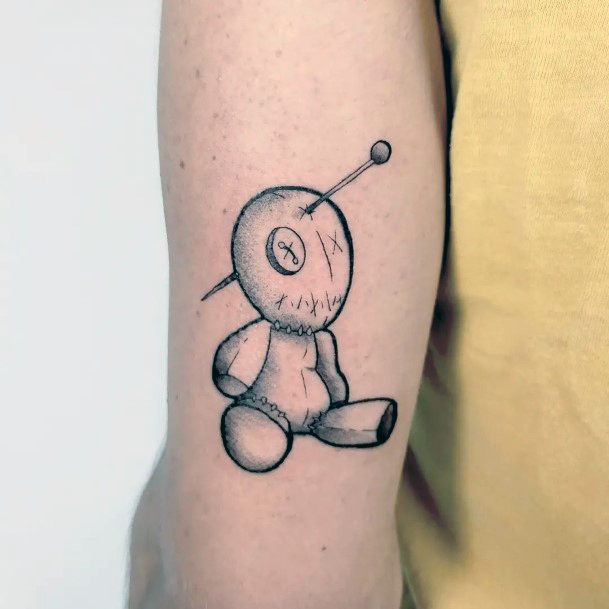
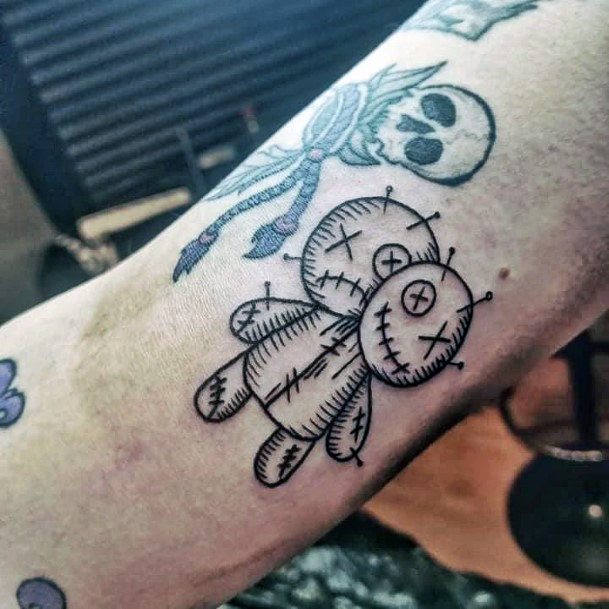
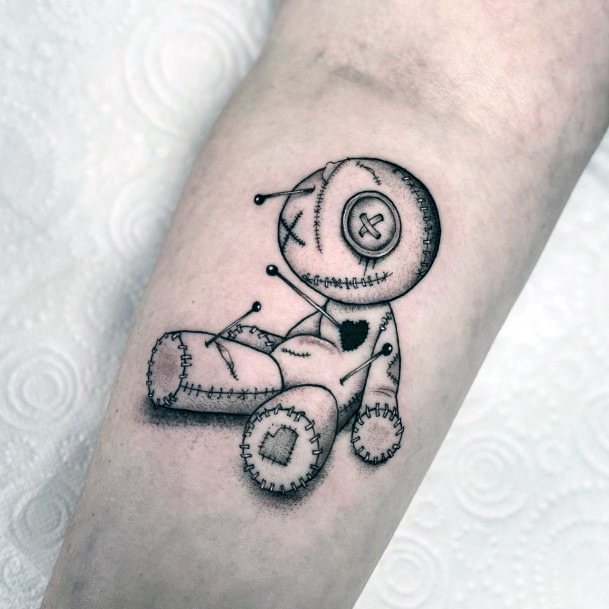
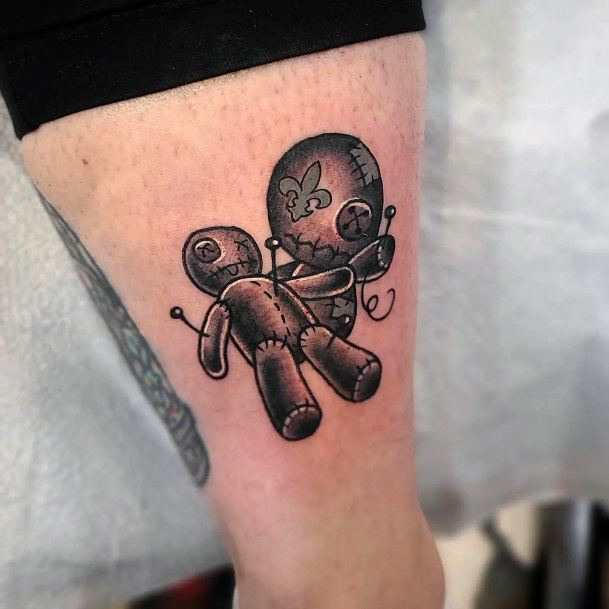

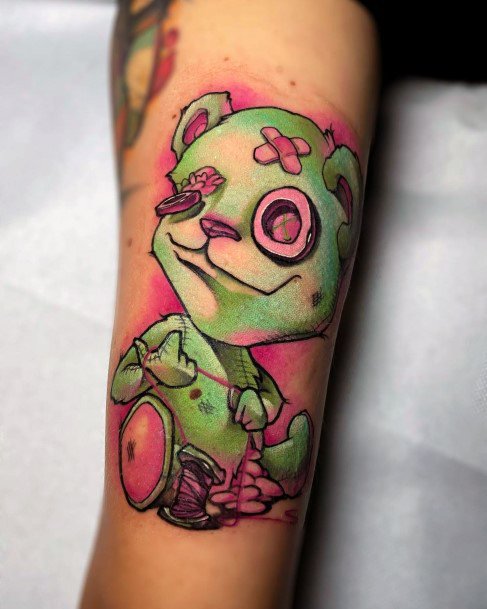
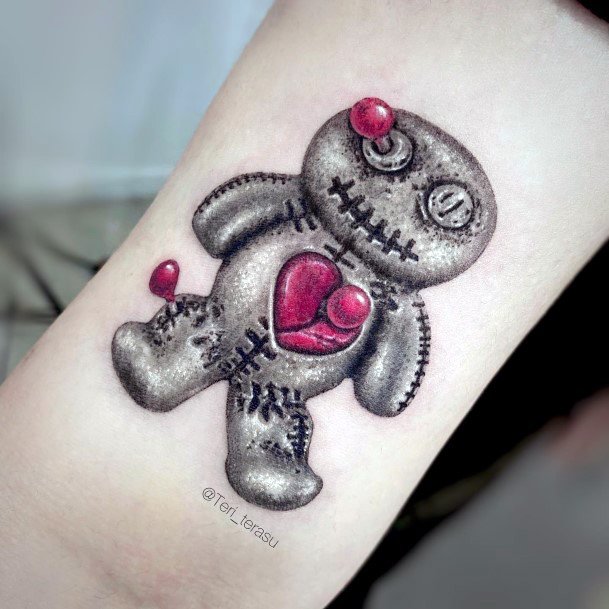
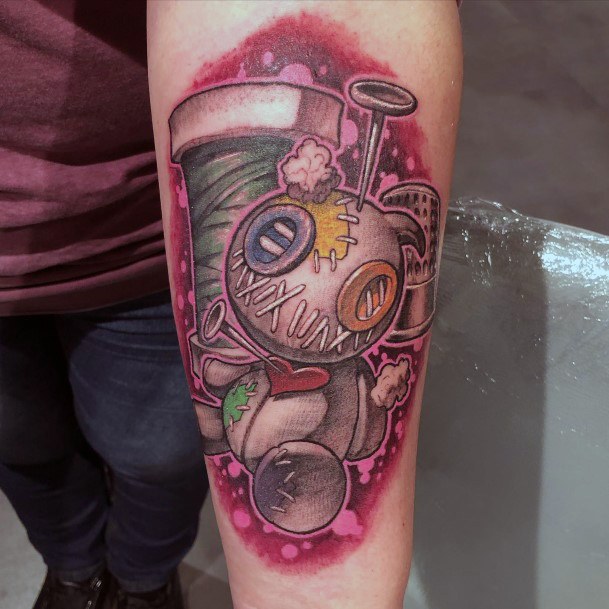
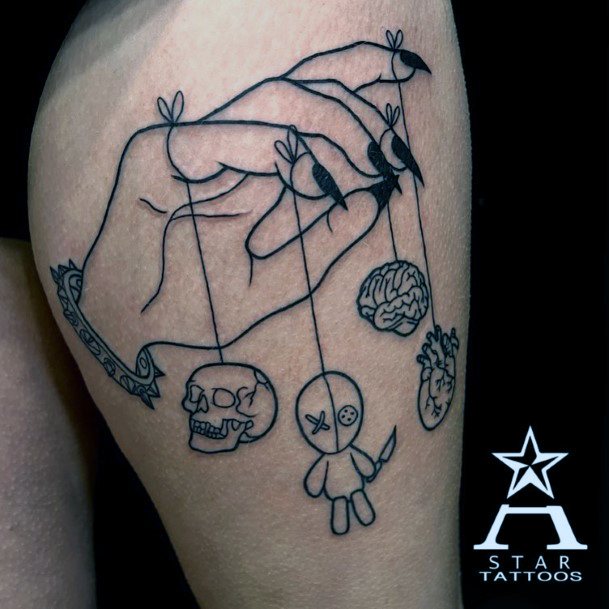
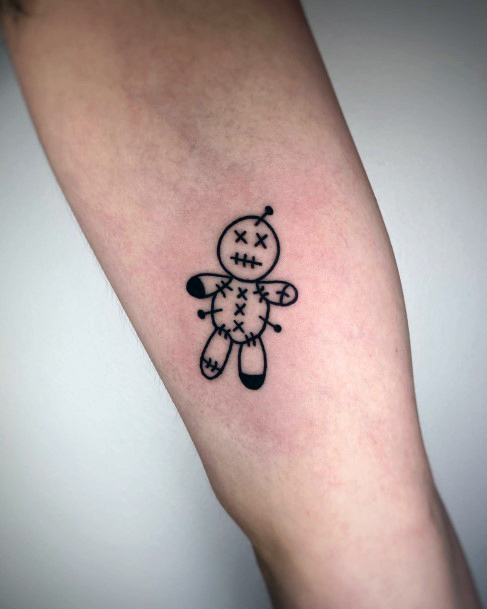
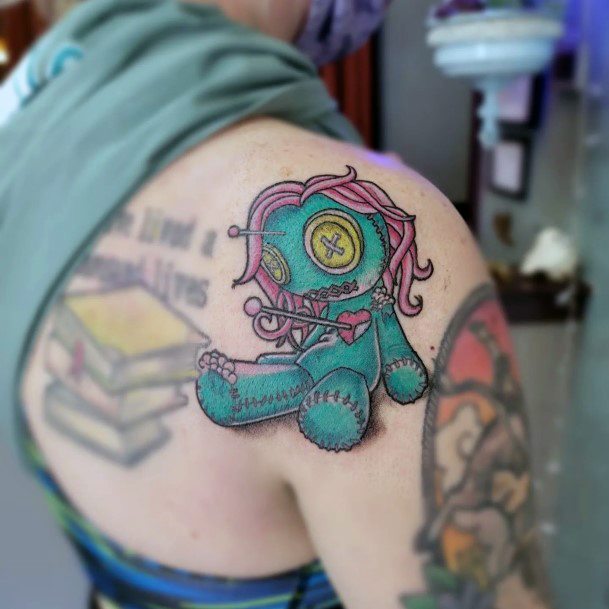
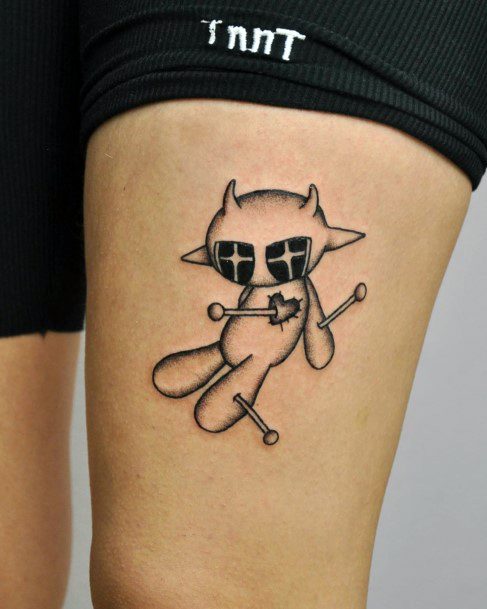
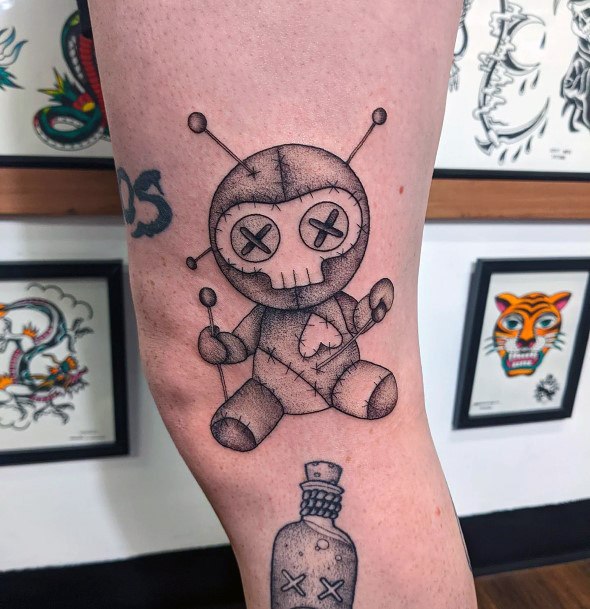

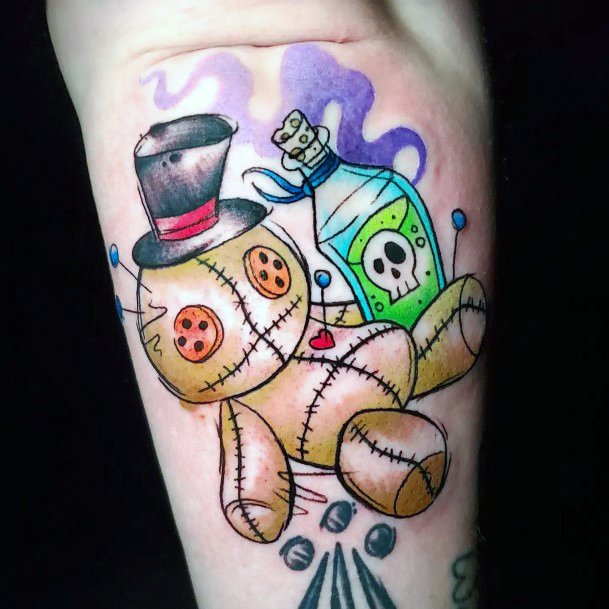
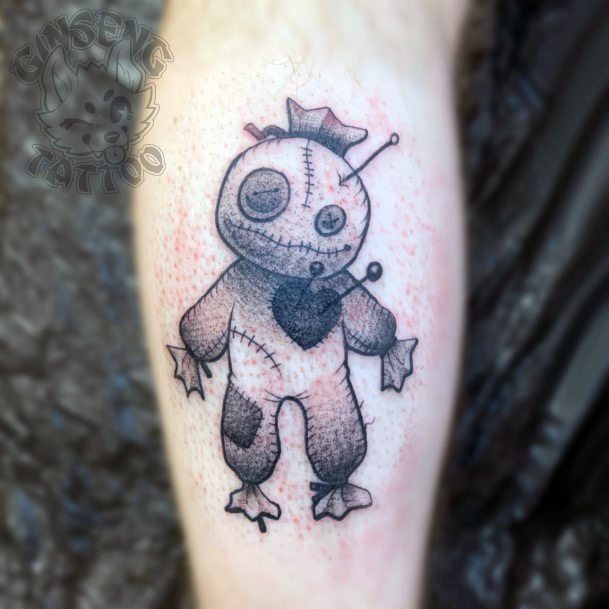


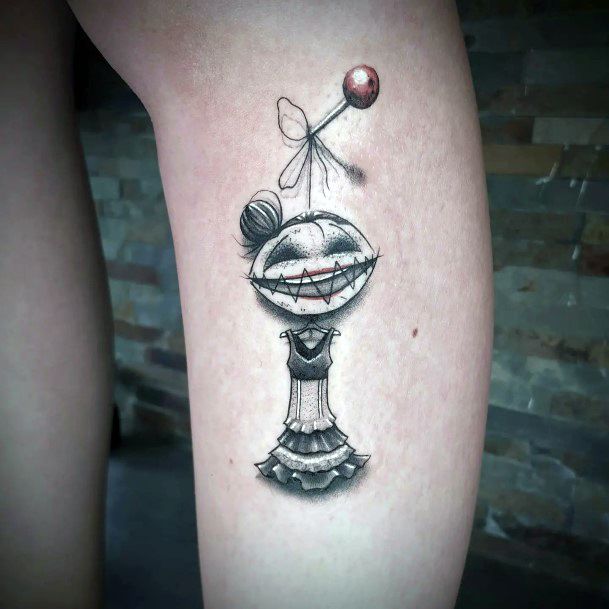
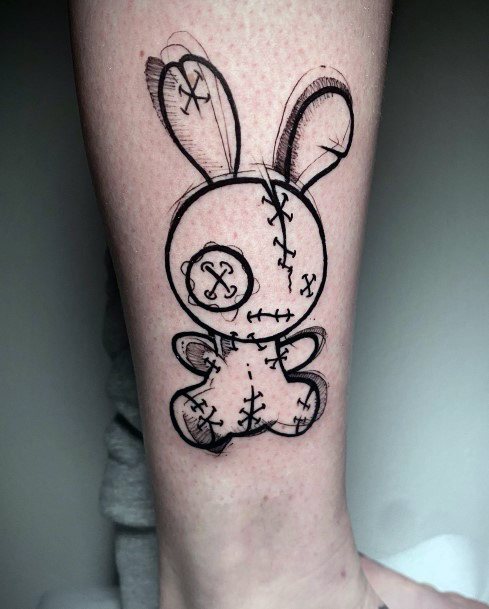
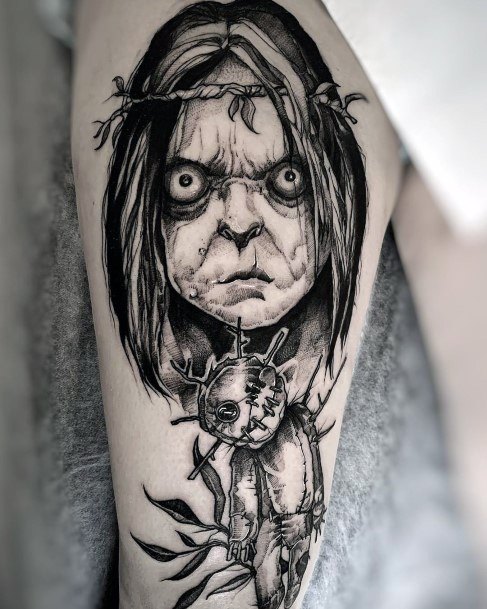

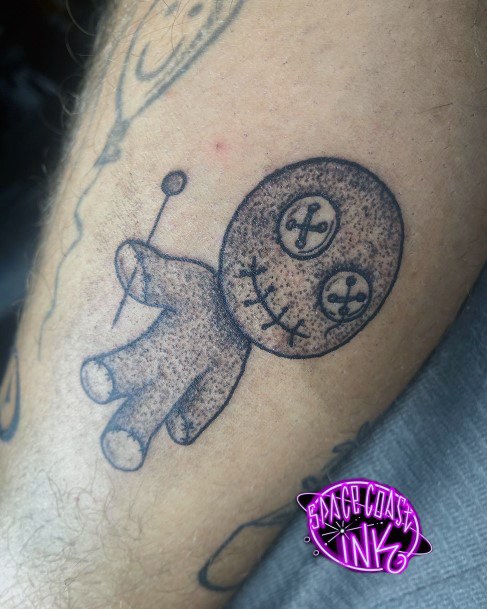
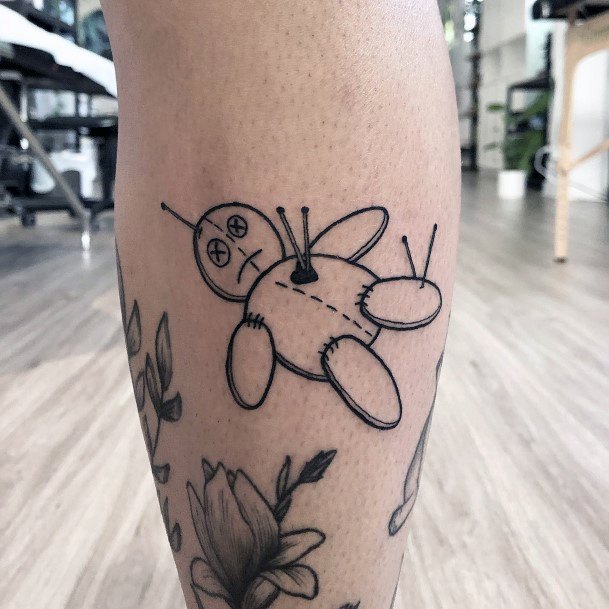
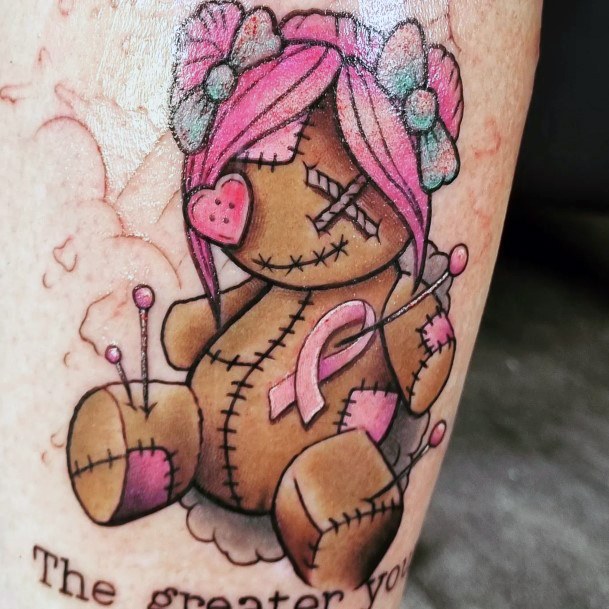
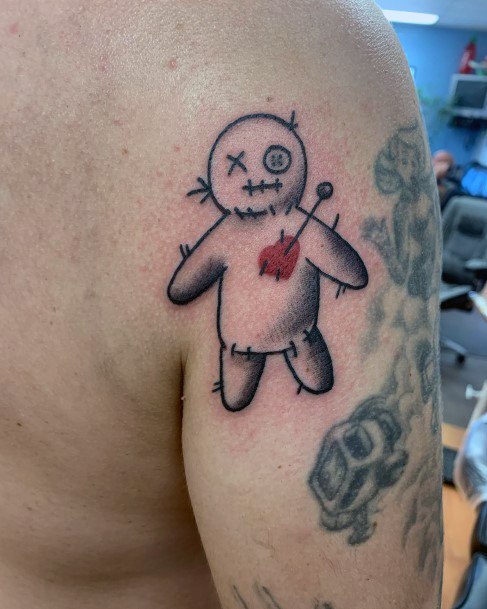
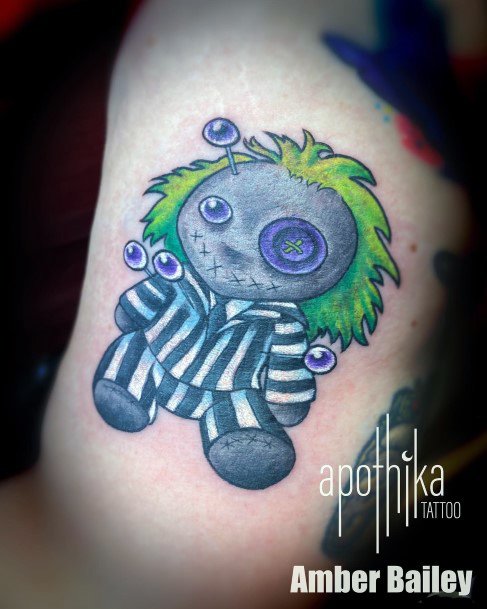
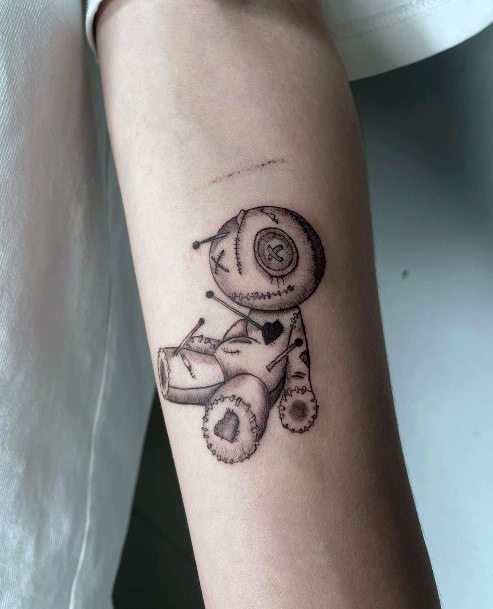
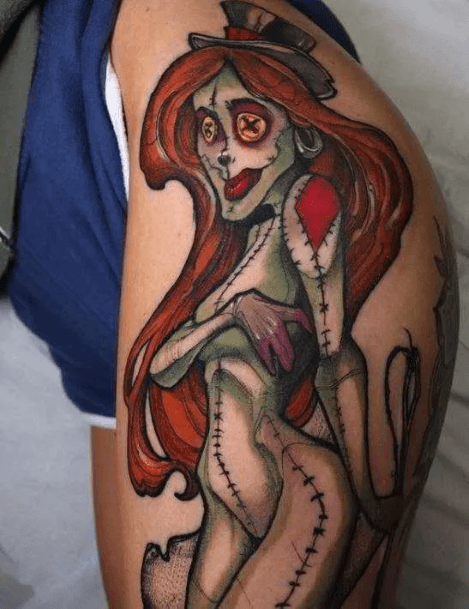
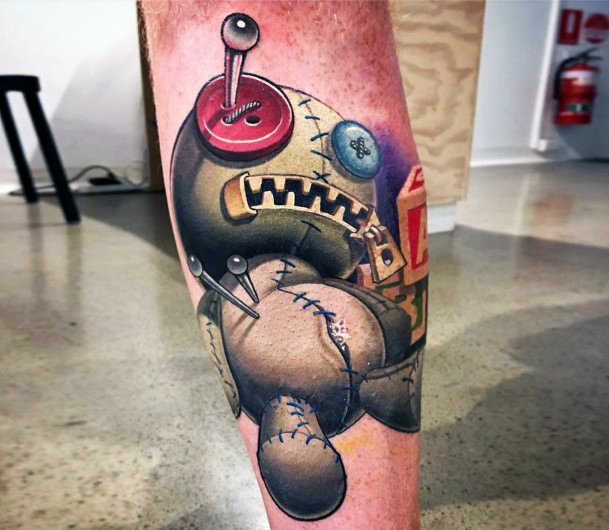

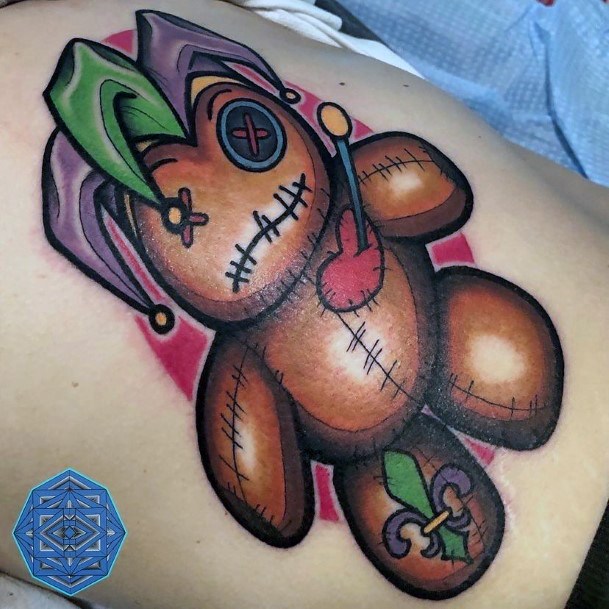
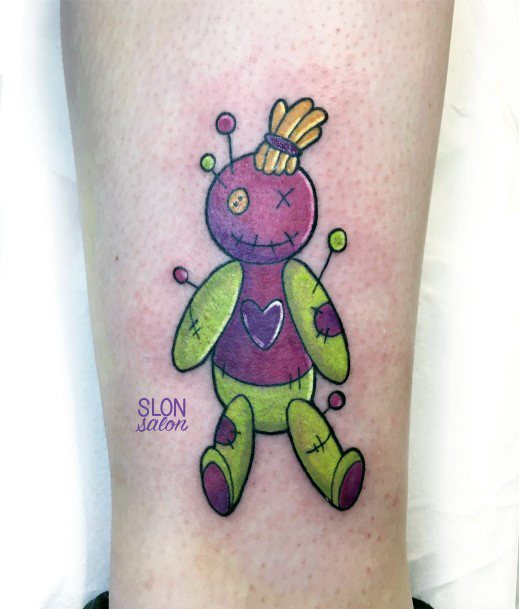
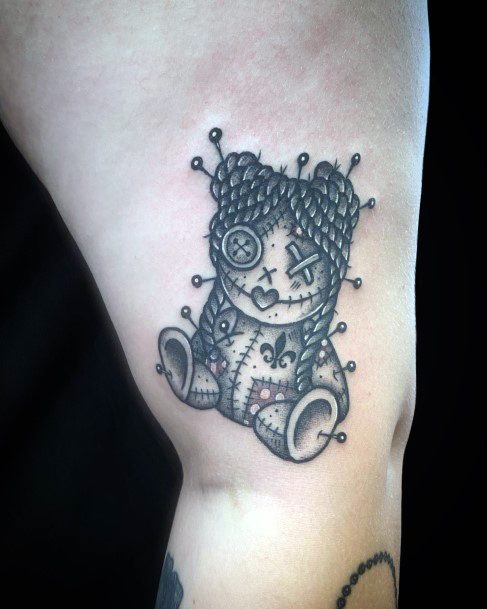
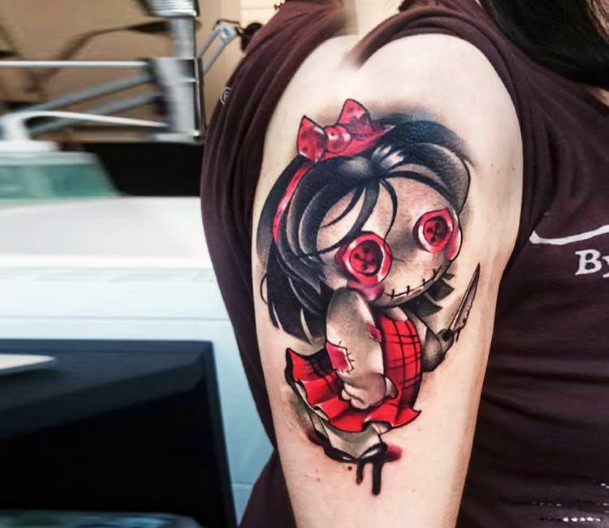
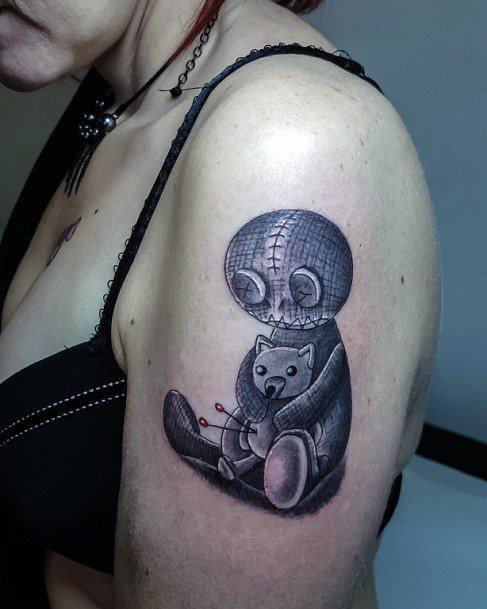
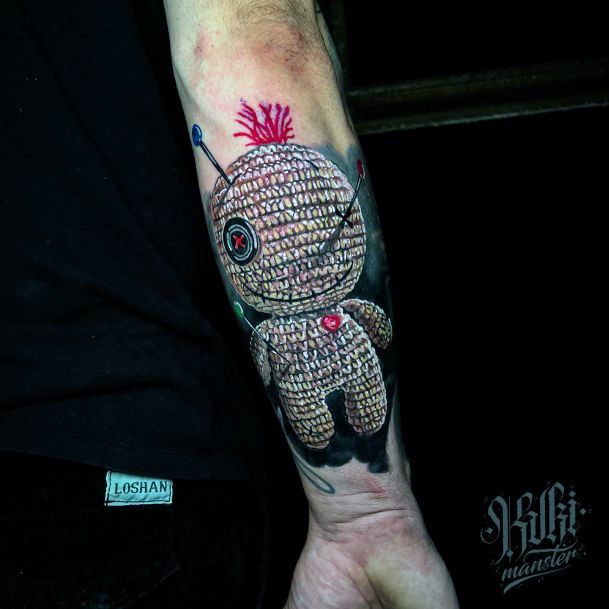
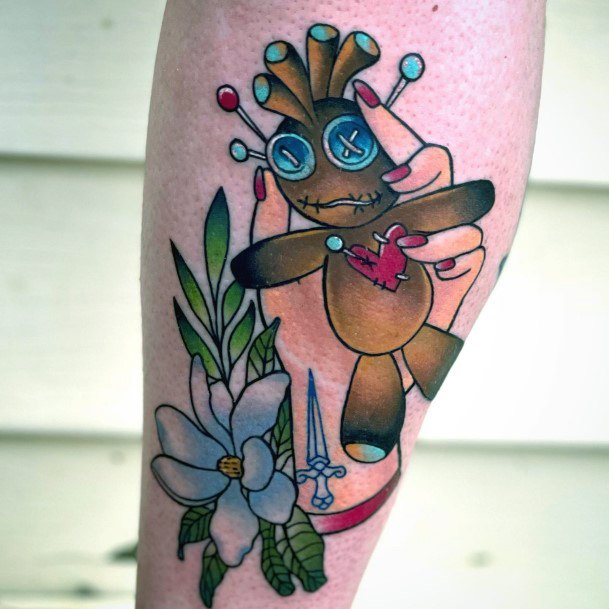
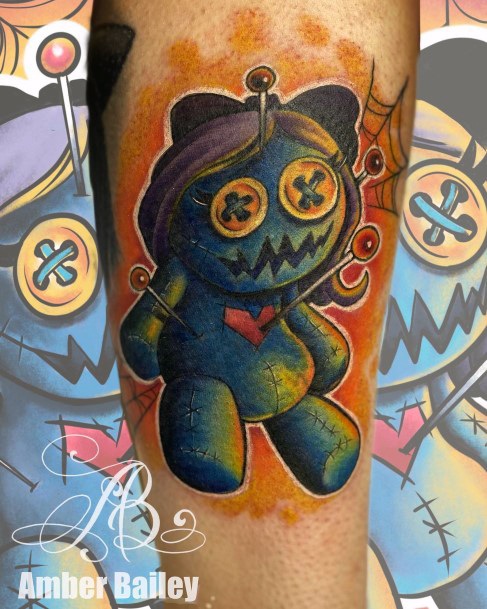
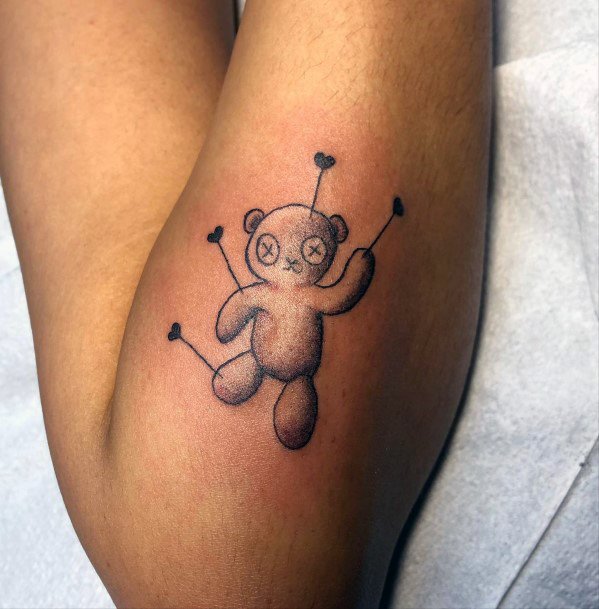
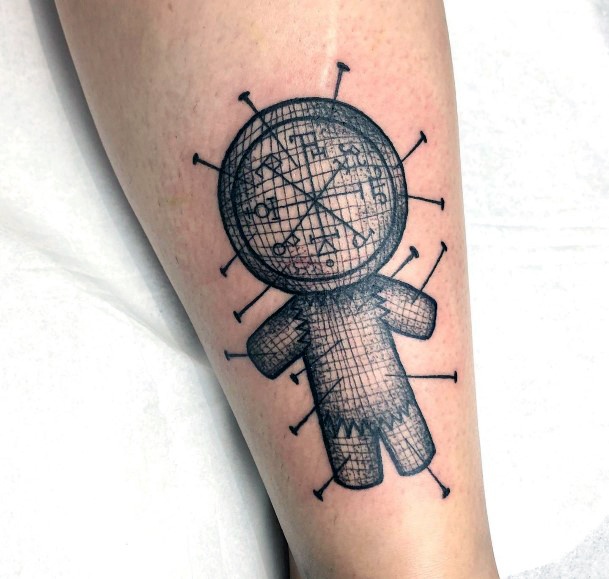
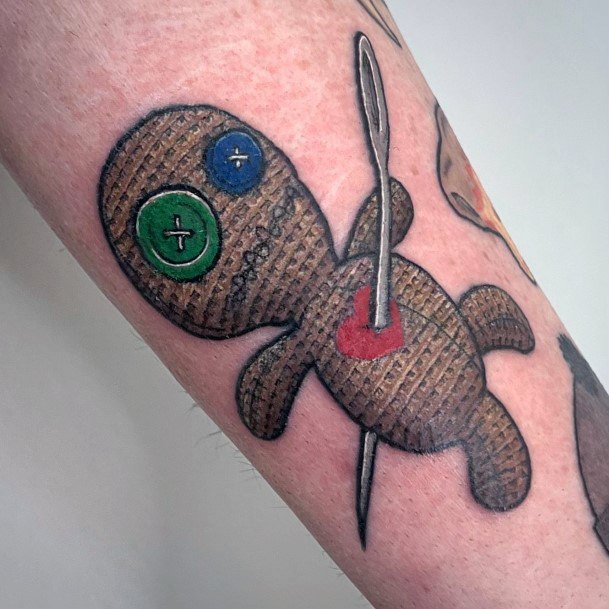
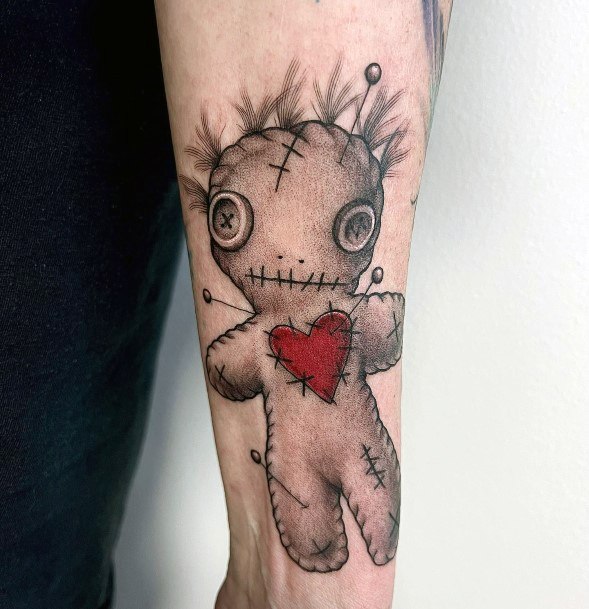



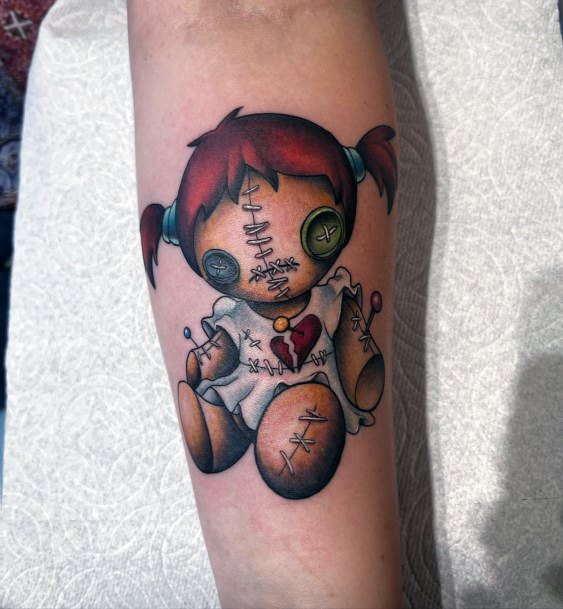
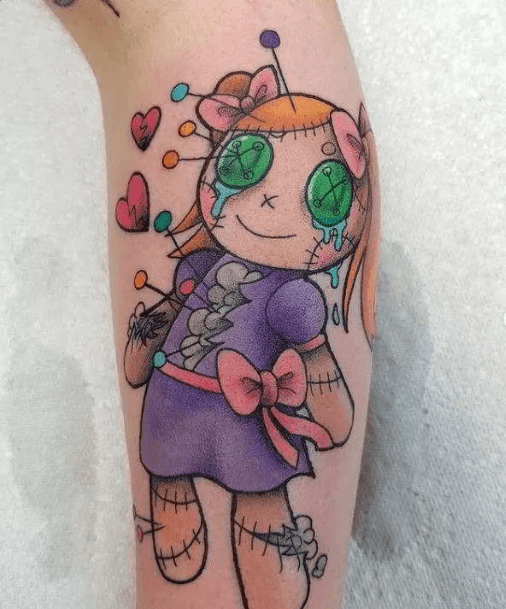


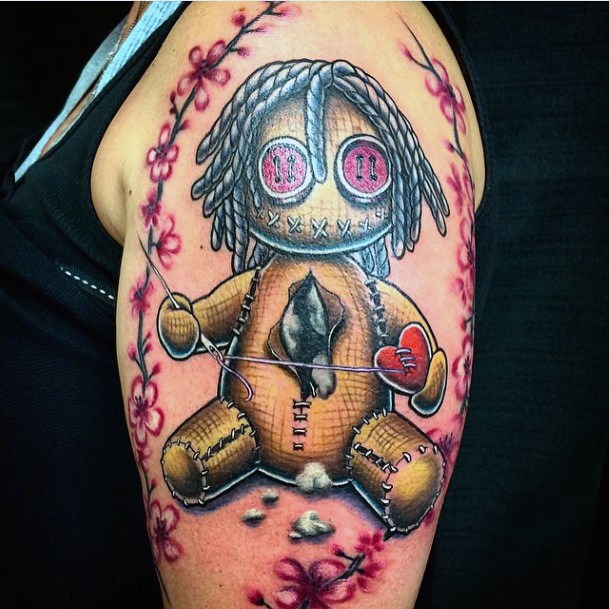
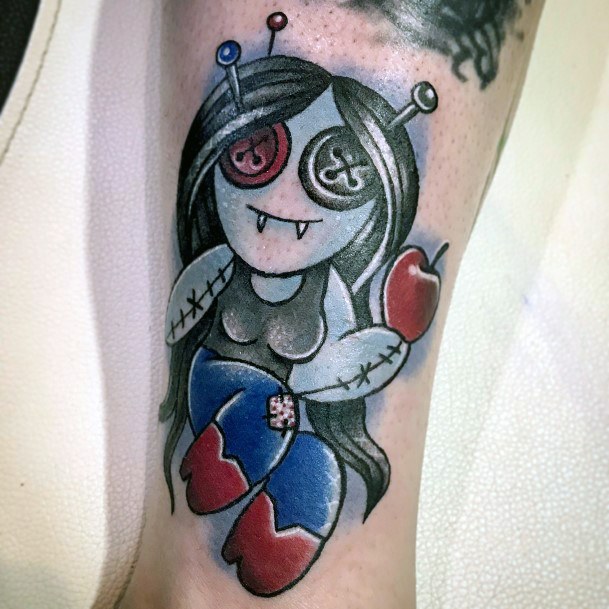
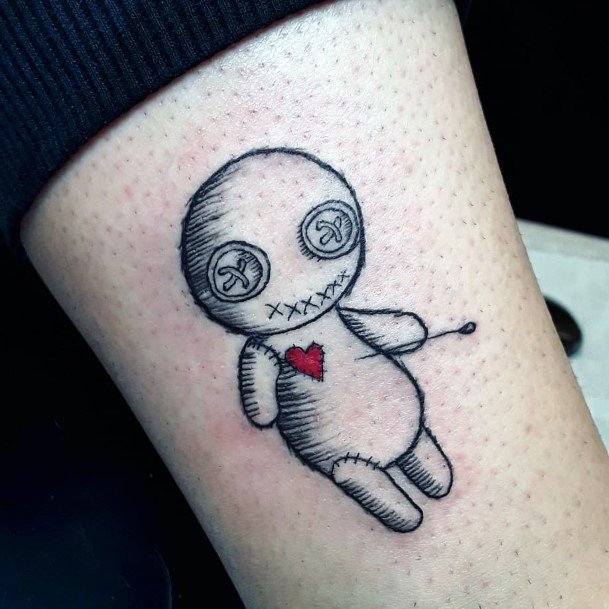
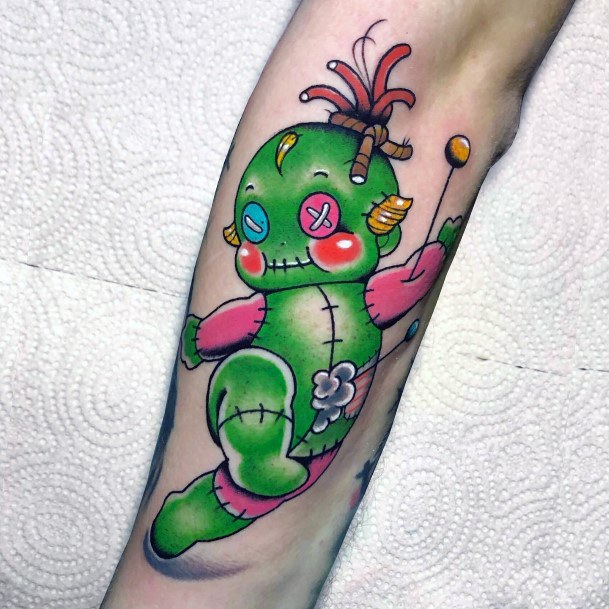
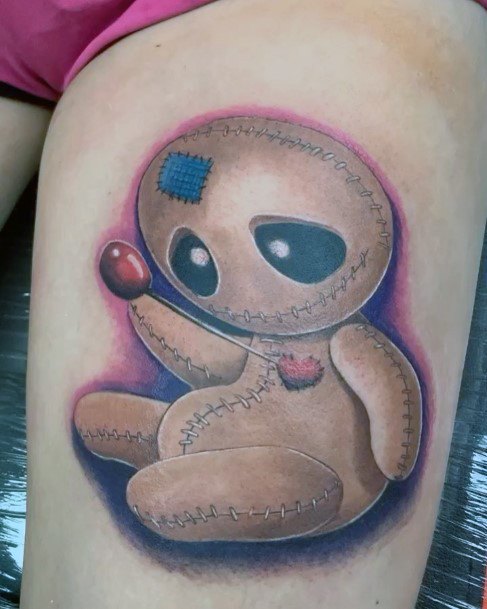

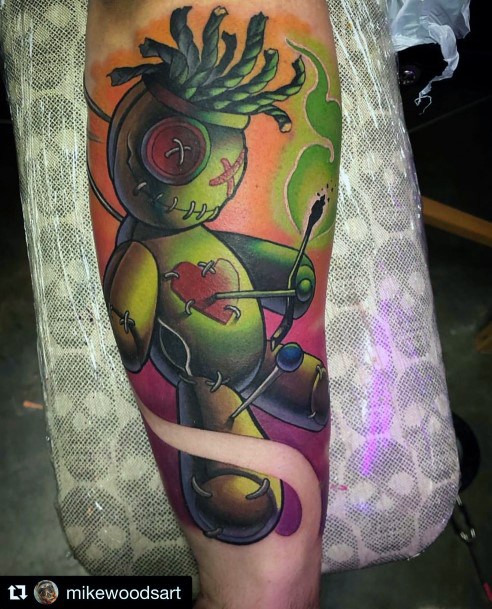
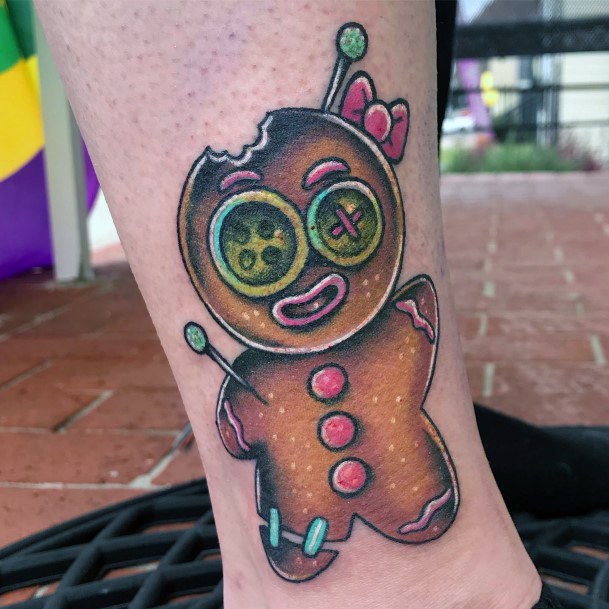

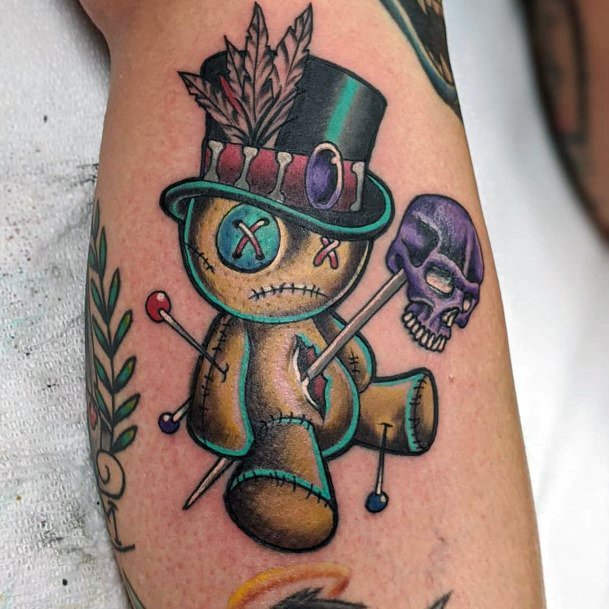
Voodoo Doll tattoo meanings and symbolism:
What do Voodoo Doll themed designs mean and symbolize?: Voodoo dolls have long been associated with many cultures and religions around the world. In recent times, voodoo dolls have become increasingly popularized in the media, often presented as a tool for cursing or controlling another person. Nonetheless, despite this negative connotation, voodoo dolls actually have a much deeper cultural and spiritual symbolism behind them. This symbolism can be found in the various materials used to make the dolls, the purpose of the dolls, and in the rituals and beliefs associated with them.
The physical material of a voodoo doll is often made from cloth or paper and stuffed with herbs, twigs, animal parts or other natural objects. These materials are chosen for their spiritual significance; for example, certain herbs are believed to have healing properties while twigs and animal parts may be chosen for their connection to a particular spirit or deity. The color of the doll also has symbolic meaning; white is often associated with positive energy while red can signify strength and protection. Additionally, symbols such as eyes or crosses may be added to further enhance the doll’s spiritual power.
The purpose of a voodoo doll is usually to attract good luck or protection from harm; however, they can also be used to bring harm to an enemy through “cursing” rituals. In this case, pins are inserted into specific points on the doll that correspond to areas on the body of the target person, representing an intention to cause harm. Certain objects may also be placed on or around the doll that further symbolize a desire for retribution or justice. For example, burning candles around a voodoo doll symbolizes burning away negative energy or bad luck.
Rituals associated with voodoo dolls vary greatly depending on culture, but generally involve reciting prayers and invocations over the doll in order to “activate” its power. Some rituals involve burying the doll in earth or throwing it into water as symbols of new beginnings or rebirths, while other rituals involve burying it under an altar as a way of offering protection.
The spiritual symbolism behind voodoo dolls is complex and varied; however, they are typically seen as representing power and protection over oneself as well as control over others’ fate through rituals and spells. In some traditions these dolls are also believed to represent our ancestors or spiritual guides who communicate with us during times of need. No matter what their symbolism is intended to represent though, voodoo dolls remain powerful symbols in many cultures and religions around the world today.

